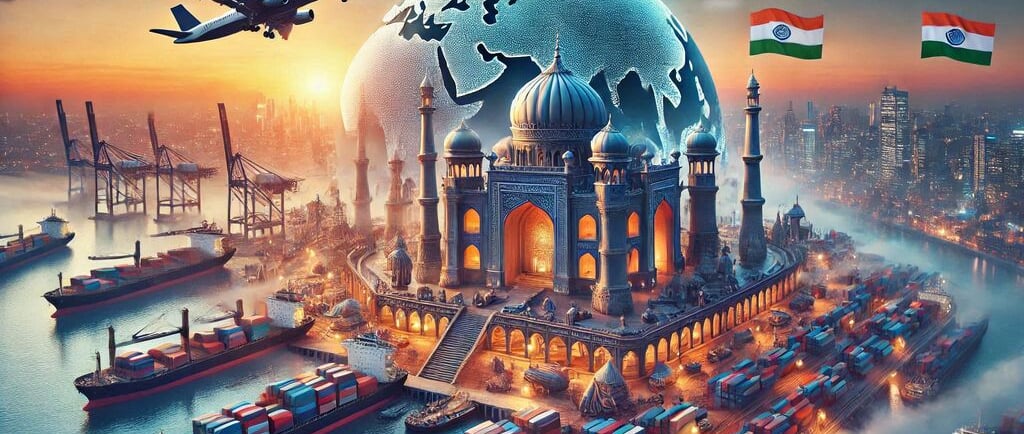Let us collaborate to foster global growth and development together.
Navigating India's Regulatory Environment: Essential Tips for International Trade
Discover essential tips for navigating India’s regulatory environment. Ensure smooth international trade by understanding key regulations and compliance requirements.
INDIA
10/31/20243 min read


Navigating India’s Regulatory Environment: Essential Tips for International Trade
Meta Description: Discover essential tips for navigating India’s regulatory environment. Ensure smooth international trade by understanding key regulations and compliance requirements.
India is one of the fastest-growing global economies, presenting lucrative opportunities for international trade. However, navigating India’s regulatory environment can seem daunting, especially for businesses unfamiliar with its complexities. By understanding India’s trade regulations, compliance requirements, and cultural nuances, international traders can position themselves for success.
Why Understanding Regulations Matters in International Trade
Growing Trade Potential
India’s dynamic market, driven by robust demand and an expanding middle class, is a hotspot for global trade. From technology and pharmaceuticals to textiles and agro-products, India offers a diverse export and import portfolio.
Yet, entering this market requires more than just enthusiasm. Without a clear understanding of India’s regulatory landscape, businesses risk delays, penalties, or worse—legal complications.
Mitigating Risks
Navigating trade regulations ensures smooth operations, from licensing to customs clearance. By staying compliant, businesses can:
Avoid fines and disruptions
Build trust with local partners
Streamline operations for long-term profitability
Key Regulations to Know for International Trade in India
1. Foreign Trade Policy (FTP)
India’s FTP outlines guidelines for exports and imports. Managed by the Directorate General of Foreign Trade (DGFT), the policy promotes ease of business while protecting domestic industries. The FTP is updated periodically, so staying informed is crucial.
Tips:
Review the current FTP at DGFT’s official website.
Check for incentives like export promotion schemes that can benefit your business.
2. Goods and Services Tax (GST)
India’s GST simplifies indirect taxation, consolidating multiple taxes into a single framework. Traders must register for GST and understand its implications on their goods and services.
Tips:
Use GST calculation tools to estimate tax costs.
Partner with a local tax consultant for compliance.
3. Customs and Import Duties
Customs duties vary based on product type, country of origin, and trade agreements. Be aware of documentation requirements, including the Bill of Entry and Importer Exporter Code (IEC).
Tips:
Familiarize yourself with India’s Harmonized System (HS) code classification.
Leverage Free Trade Agreements (FTAs) for duty concessions.
Essential Tips for Navigating Trade Processes
1. Get an Importer Exporter Code (IEC)
The IEC is mandatory for businesses engaging in cross-border trade. Issued by the DGFT, it serves as your gateway to trading in India.
How to Apply:
Visit the DGFT’s online portal.
Complete the application form with business credentials.
Pay the application fee and upload required documents, like a PAN card and business address proof.
2. Know the Restricted and Prohibited Items List
India maintains lists of goods that are restricted or prohibited from import/export. Ensuring your product aligns with these regulations is essential for avoiding delays or confiscation.
3. Leverage Trade Agreements
India has signed various FTAs with countries, offering reduced tariffs and other benefits. Understanding these agreements can significantly lower costs.
Examples:
India–ASEAN FTA
Comprehensive Economic Partnership Agreements (CEPAs) with countries like Japan and South Korea
Tip: Work with a trade consultant who can guide you on applicable trade agreements.
Challenges to Be Aware Of
Bureaucratic Hurdles
Despite reforms, India’s bureaucracy can be cumbersome. Expect delays in approvals or additional document requirements.
How to Mitigate:
Partner with local experts familiar with Indian regulatory processes.
Build contingency time into your trade plans.
Cultural and Language Barriers
India’s diversity can sometimes complicate communication. Misunderstandings can arise due to cultural or language differences.
How to Overcome:
Hire bilingual staff or interpreters.
Research cultural practices to build rapport with Indian counterparts.
Real-Life Scenarios
Scenario 1: A European electronics company wanted to import its products into India but faced customs delays due to missing HS codes. By consulting a local trade expert, they corrected their documentation and streamlined future shipments.
Scenario 2: A U.S. food manufacturer utilized India’s FTA with ASEAN countries, saving 15% on import duties for packaging materials. Understanding trade agreements helped them cut costs and increase profitability.
Opportunities for International Traders in India
Expanding E-Commerce Market
With platforms like Amazon and Flipkart driving online retail, India’s e-commerce growth is an excellent opportunity for international traders to penetrate consumer markets.
Infrastructure Development
India’s infrastructure projects, such as industrial corridors and logistics hubs, make it easier to transport goods across the country.
Conclusion: Smooth Your Path to Success in India
Navigating India’s regulatory environment requires preparation, local expertise, and adaptability. By staying updated on trade policies, leveraging incentives, and overcoming cultural barriers, you can ensure successful international trade operations.
Ready to explore India’s potential? Share your experiences in the comments or check out related articles, like “Mastering Global Trade Strategies” or “Building Strong Cross-Border Partnerships.”
Innovation
Cutting-edge solutions for industrial efficiency and productivity.
© 2024. All rights reserved.


